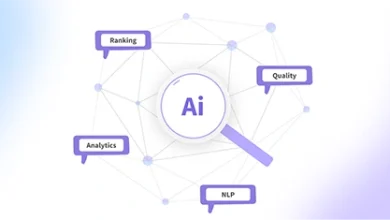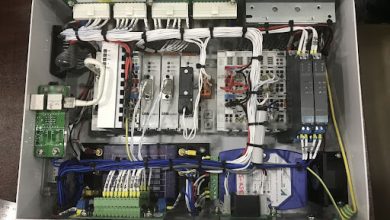In today’s hyper-competitive digital world, every business website design in Dublin —from startups in Docklands to family-run shops in Ranelagh—needs a strong online presence. A website isn’t just a luxury anymore; it’s a core part of your brand identity, marketing strategy, and customer experience.
But when it comes to building or redesigning your website, one important question arises:
Should you choose a custom website design or go for a template-based website?
This question is especially relevant for Dublin-based businesses trying to balance budget, speed, flexibility, and performance.
In this detailed guide, we’ll compare both options—custom vs. template—across critical factors that matter to businesses in Dublin. We’ll look at cost, SEO, branding, scalability, UX, speed, mobile performance, and long-term value so you can make the smartest decision for your business.
What is a Template Website?
A template-based website is built using pre-designed layouts that can be quickly customized with your content, logo, and colors.
Common platforms offering templates include:
-
WordPress (with themes like Astra, Divi, OceanWP)
-
Wix and Editor X
-
Squarespace
-
Shopify (for eCommerce)
-
Webflow (with cloneable templates)
Templates are usually plug-and-play, allowing you to launch faster, often at a lower upfront cost.
What is a Custom Website?
A custom website is designed and developed from scratch or from a clean framework based on your specific business goals, brand identity, user experience (UX) preferences, and technical requirements.
Custom sites are usually built on:
-
WordPress with custom-coded themes
-
Webflow with advanced design freedom
-
Laravel, React, or custom CMS for more complex projects
While they take longer and cost more upfront, custom sites provide greater control, uniqueness, and scalability.
1. Design Uniqueness and Branding
Template:
Most templates are mass-produced and used by thousands of websites globally. Even with color and content tweaks, your site may resemble others—sometimes even competitors.
Dublin Business Risk: Your website might look like another restaurant, gym, or agency across town.
Custom:
A custom website is tailored to your unique brand story, visuals, and tone. It creates a cohesive experience from homepage to checkout, aligned with your Dublin audience.
Ideal for: Businesses that want to stand out in saturated industries—law firms, salons, boutiques, premium services.
✅ Winner: Custom
If distinct brand identity and differentiation are key, go custom.
2. Cost and Budget
Template:
Templates are budget-friendly. Most small businesses in Dublin can launch a website for €500–€2,000 depending on content and features.
Custom:
Custom websites typically range from €3,000 to €10,000+ in Dublin, depending on complexity, animations, integrations, and agency fees.
Tip: A hybrid approach can sometimes work—start with a template but customize with developer support.
✅ Winner: Template (Short-Term)
For startups or sole traders on a tight budget, templates offer a fast, affordable launch.
3. SEO (Search Engine Optimization)
Template:
Many templates aren’t SEO-optimized out of the box. They often have bloated code, slow load speeds, or poor heading structures. Some may not support schema markup or advanced metadata.
Custom:
A custom website is built with SEO in mind, often in collaboration with an SEO expert. You can optimize page speed, code structure, mobile usability, and integrate Google tools properly.
For Dublin businesses targeting keywords like “hairdresser in Dublin 2” or “accountant Ballsbridge,” SEO is essential.
✅ Winner: Custom
Custom gives you complete SEO control—critical for ranking in Google.ie.
4. Speed and Performance
Template:
Pre-built themes often come with extra plugins and features you don’t need. This can slow down your site. Heavy code and animations may create lag, especially on mobile.
Custom:
Custom websites use lightweight, efficient code and only the features you need. Developers can optimize it for Irish server locations and fast loading in Dublin.
✅ Winner: Custom
Faster sites = better UX + better rankings = more leads and conversions.
5. Scalability and Flexibility
Template:
Templates are designed for general use, not growth. Once you outgrow the layout, adding new features can be messy or even impossible.
Example: Want to add a booking system, multilingual support, or dynamic content? A template might limit you.
Custom:
A custom site is built to scale. Whether you want to add a shop, blog, or integrate with tools like Mailchimp, HubSpot, or Stripe—you’ll have room to grow.
✅ Winner: Custom
Ideal for businesses planning future features or expansions (e.g., new branches in Dublin or global reach).
6. Time to Launch
Template:
Most template websites can be launched in 2 to 3 weeks, or even faster if you prepare content in advance.
Custom:
Custom websites usually take 6 to 12 weeks, involving discovery, wireframes, testing, and revisions.
✅ Winner: Template
Templates are perfect for quick launches, pop-up events, or MVPs.
7. User Experience (UX) and Conversion Optimization
Template:
Templates may not follow the best UX practices for your audience. Forms may be clunky, CTAs may not be placed optimally, and the layout might not guide users through your funnel effectively.
Custom:
A good designer will structure your custom site around user intent, journey, and business goals. Every button, block, and scroll action will have a purpose.
✅ Winner: Custom
If you want a site that converts, not just exists—go custom.
8. Mobile Experience
Template:
Many templates are responsive but not always optimized. Layouts may break, fonts shrink, or buttons become hard to tap.
Custom:
A custom site ensures that the mobile experience is prioritized. This is vital for Dublin’s on-the-go users relying on mobile for research, directions, and bookings.
✅ Winner: Custom
Mobile-first design is non-negotiable in 2025.
9. Ongoing Support and Maintenance
Template:
If you use a DIY builder (like Wix), you may handle everything yourself. Updates can be simple, but you’re limited by the platform.
Custom:
With a custom site built on WordPress or Webflow, you often get ongoing support from a Dublin-based agency or freelancer, plus easy CMS access.
✅ Winner: Tie
Templates are low-maintenance, but custom builds offer long-term support options and flexibility.
10. Security and GDPR Compliance
Template:
Many templates lack proper SSL, cookie consent banners, or privacy policy templates. They also may be vulnerable if not updated.
Custom:
A custom site built in Ireland will ensure GDPR compliance, use Irish/European hosting (if needed), and follow best security practices.
✅ Winner: Custom
Security and compliance should never be compromised.
Summary Table: Custom vs. Template Website Design (Dublin, 2025)
| Feature | Template | Custom |
|---|---|---|
| Cost | ✅ Lower | ❌ Higher |
| Speed to Launch | ✅ Faster | ❌ Slower |
| Design Uniqueness | ❌ Limited | ✅ High |
| SEO Optimization | ❌ Basic | ✅ Advanced |
| Mobile Optimization | ❌ Sometimes | ✅ Always |
| UX/Conversion Optimization | ❌ Generic | ✅ Strategic |
| Scalability | ❌ Limited | ✅ Future-ready |
| Security & GDPR Compliance | ❌ Risky | ✅ Built-in |
| Support & Maintenance | ✅ Easy DIY | ✅ Full Service |
So, Which One Is Right for Your Dublin Business?
Choose a Template Website if:
-
You’re a solo entrepreneur or small business just getting started
-
You have a limited budget and need something live quickly
-
You’re launching a temporary project, campaign, or event
-
You don’t need complex features or custom integrations
Choose a Custom Website if:
-
You want to differentiate your brand in a competitive Dublin market
-
You rely on Google traffic, local SEO, or mobile performance
-
You need advanced functionality or integrations
-
You’re planning for growth, expansion, or international sales
-
You want to build long-term credibility and conversion
Final Thoughts
In 2025, your website is the most important digital asset your Dublin business owns. Whether you go custom or template depends on your current stage, goals, and budget.
Template = Speed + Simplicity
Custom = Power + Performance
The best approach? Choose the solution that fits your business now, but keeps the door open for future growth. And whichever you choose—invest in great content, strong visuals, and ongoing optimization.




